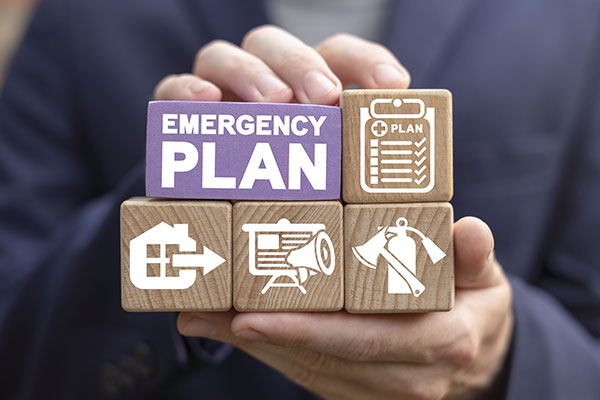Natural disasters and emergencies are inevitable, and the only thing we can do is prepare for them. That's why it is crucial that homeowners and condo associations put measures and plans in place to address them in the event they occur to avoid panic.
HOA board members get tasked with formulating an emergency action plan to tackle disasters and emergencies, including hurricanes, tornadoes, storms, floods, thunderstorms, fires, pandemics, riots, or earthquakes, to help the community members respond to and manage situations.
An emergency action plan enables the association to identify potential threats, minimize damage and disruption, prepare for threats, respond calmly, and carry out the necessary repairs and reconstructions after a disaster.
But developing an HOA emergency action plan can prove difficult, especially if you, as the board members, don't have the basics. There's no need to worry. This article aims to look at the seven crucial steps to help create an effective and workable emergency action plan for your HOA.
1. Identify Needs
Your emergency plan should reflect the community's needs and requirements. Some of the factors board directors need to consider include:
- Location of the HOA and the threats that frequently affect the area
- HOA type. Associations in high-rise areas require more comprehensive emergency action plans compared to those made of single-family homes.
- Features such as building types, amenities, landscape, and equipment
- HOA demographics –age, profession, and economic status, among others.
- Media response and communication.
2. Form a Committee
Committees help board members run the HOA better and more smoothly. Once you identify your community's needs, the next step is to form a committee charged with creating the emergency action plan. The committee can comprise homeowners with hands-on knowledge of emergency plans, risk assessment, community outreach, emergency response, and evacuation during disasters.
3. Set Aside and/or Approve the Budget
Without finances, the emergency action plan cannot be implemented. Therefore, your committee needs a substantial budget to work with, prepared before the beginning of the financial year and reviewed to accommodate any adjustments. It is also vital to assess insurance coverages and their effect on the budget.
4. Craft the Plan
The emergency and disaster action plan should give a detailed overview of homeowners' and responders' steps during a disaster or crisis. Some crucial components of the plan include:
- Chain of command
- Essential contact information
- Site plan for the entire HOA
- An evacuation plan and map to shelters and utilities such as elevators
- Standard response procedures for every disaster and emergency
- HOA insurance documents
- Emergency supplies locations
- Designated meeting place
- Evacuation plans
- Photos of community properties
- Debris management and removal procedures, and
- Response plan
5. Designate Roles and Responsibilities
Assign specific roles and duties to every stakeholder in the emergency plan. Everyone in the management, committee, board, homeowners, and vendors needs to know what got expected during a crisis or disaster. Training sessions and safety drills are an excellent way to ensure that everyone knows and understands their duties.
6. Communicate the Plan
Having the plan in place without community members knowing it makes it a vain project. The community needs to have the emergency action plan and familiarize itself with it. You can have it as a book, hardcopy, or softcopy so that everyone can quickly go through it, especially those actively involved in emergency response. HOA meetings could also be an effective way to communicate the emergency plan.
7. Annually Review and Update
Don't craft the plan, then close the book and throw away the pen. Instead, continually revisit the emergency plan and come up with ways to strengthen it or make adjustments. You can involve homeowners or seek expert advice to enhance the plan. Include things you might have omitted or adjust areas you feel should be better.
Final Thoughts
In conclusion, creating an emergency action plan is crucial for HOA board members to ensure community safety. By following the seven critical steps outlined in this blog, you can develop a comprehensive and effective plan for your HOA.





